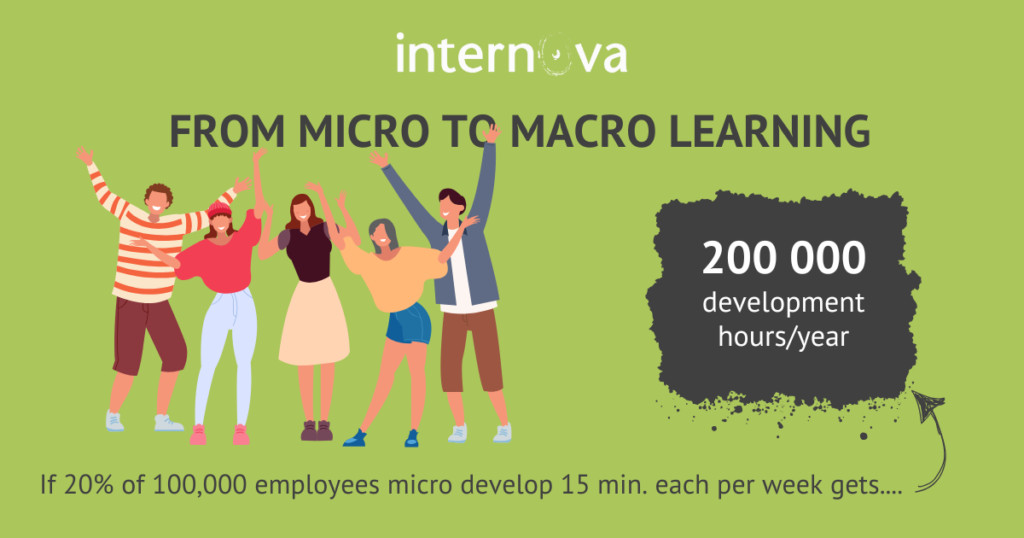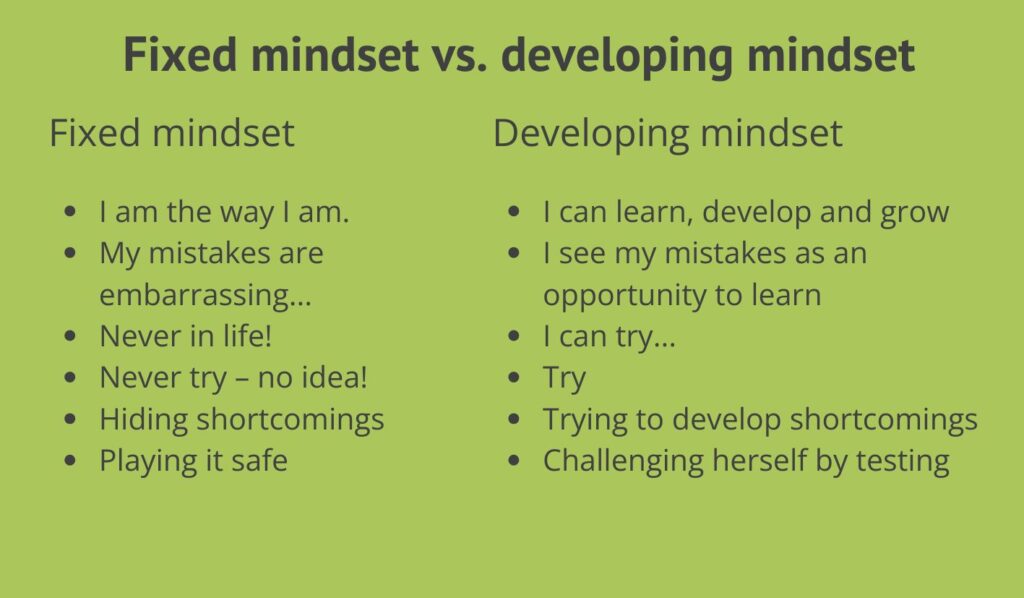Ingress
Macrolearning is a prerequisite for companies to cope with today’s rapidly changing operating environment. Managers must use effective ways to manage and develop their employees. A common mistake is getting caught up in micromanagement, where the manager gives precise instructions to quickly solve problems. This can provide a temporary solution, but employees don’t learn to deal with the problems themselves, leading to uncertainty and passivity. For managers with many employees, micromanagement takes a lot of time, and the problems recur constantly.
Instead, managers should see recurring problems as learning opportunities. By coaching employees in 1-to-1 meetings and in groups, where they themselves come up with ideas and solutions, they will learn in everyday life and develop regularly, which increases their self-motivation. This blog will explore how micro-learning can create a culture of growth and macrolearning, and how managers can equip themselves with the skills necessary to promote employee development, performance enhancement, and company success.
You may have heard this quote:
I hear and I forget. I see and remember. I do and understand. Confusius
When employees receive encouragement and feedback on their solutions, their self-confidence is strengthened, and the chances of success increase. When managers inspire trust, listen to employees’ thoughts and show empathy, their commitment and ability to solve tasks independently increases.
If managers act as process leaders for employee development and have a structure for regular 1-on-1 meetings, the gap between the current situation and the desired situation decreases. Without a development process and regular dialogues, the desired results will not be achieved.
What does microlearning mean?
Microlearning means managers continuously pay attention to daily situations where employees need to develop. Regular microlearning spreads a developing mindset for employees, teams and in the organisation, increasing skills and chances of succeeding with desired changes. By equipping managers with coaching skills and that they follow up on annual performance reviews monthly, a culture is created where growth and learning become a natural part of the work.
The most important thing about microlearning is that it involves small, continuous development steps for the worker. To achieve this, managers should first identify the employee’s current level of competence and development needs in the area in question. Then managers can coach the employee by setting goals for learning together, asking how the employee wants to work to achieve the goals, and setting a reasonable time frame for achieving them.
Help employees develop by driving micro-learning and development as a natural part of their work.
When employees continuously work to improve their skills, their chances of success increase. It is important that regular feedback supports their development process and follow-up, so that they can see their progress and remain motivated to achieve their set goals.
Individual conversations of 10-30 minutes per week or every two weeks can have a huge cumulative effect. In large organisations, this can mean millions of development hours each year, which is cost-effective compared to traditional methods. When all managers work with micro-learning, both the employees’ development curve and the company’s performance improve significantly.
Imagine when formal training or individual improvement of employees is used and becomes directly useful in the work thanks to regular coach follow-up with the immediate manager.
Continuous development and learning are handled as a natural task, and new knowledge from formal education or personal improvement is directly useful in the work thanks to microlearning and development in 1-to-1 meetings with the immediate manager. Microlearning is about both quantity and quality. By creating space for reflection and growth, these conversations foster trust and engagement.
Microlearning at the individual level provides macrolearning for the company
By starting with microlearning at the individual level, it can then spread to teams and departments, producing a domino effect that develops and improves the entire organisation. Development becomes a natural part of the work, which provides a resilient and adaptable organization.
In a world of constant change, micro-learning is necessary. Organisations that regularly develop employees will thrive. Microlearning, driven by coaching leadership, is key to unlocking employee potential and improving company performance. When enough employees regularly microlearn, it leads to macro-learning.

What is needed to create macrolearning in companies?
To create macrolearning, a developing mindset is needed among employees and, more importantly, for managers. In addition, the annual performance reviews need regular individual follow-up and a structured development process to create the desired changes.
A developing mindset
A developing mindset: All change starts with a mindset. Without updating our way of thinking, it is difficult to make lasting changes. We all carry with us different ways of thinking, both conscious and unconscious, helpful and less helpful. A leader who sees others’ problems, but not his own, or who always rushes to the rescue, deprives others of the chance to learn. Failures should be seen as opportunities to grow, not as disasters

Annual performance appraisals with regular follow-ups lead to both macro-learning and goal fulfilment
At the annual performance appraisal, annual goals are often set for employees. The clearer these goals are, and the better they combine skill growth and skills development to perform better, the easier it will be to implement the goals when they are continuously followed up in individual 1-on-1 meetings.
For example, the follow-up meetings can be bi-weekly or monthly, depending on the employee’s need for support in achieving their goals. At these meetings, the goals from the annual performance appraisal are common, and the employee sets intermediate goals for the next follow-up meeting for both the competence goals and the skill goals. This is when the great impact of microlearning leads to macro learning for the entire company.
To create high-quality individual follow-up meetings, coaching is a suitable method.
Here are three basic skills in coaching leadership:
- Research: Ask more questions to understand the causes of problems and get employees to come up with solutions. This narrows the gap between expectations and performance.
- Listen: When you ask questions, really listen to the answers. Listen to learn more about the recipient and their response.
- Empathy: Show care and interest in others, so that they feel safe and heard. This increases their commitment and ability to solve tasks.
Link: Click here to read more about the three skills that lead to macro learning!
“The Only Definition of a Leader is someone with followers.”
Peter Drucker
Conclusion
A leader is someone with followers. To gain followers, a leader must be curious and committed to the development and well-being of employees. By asking questions, listening actively, and showing empathy, leaders can help employees grow and develop.
To create and foster growth for your employees and teams, try these methods
- Be a guide, not a judge
- Encourage them to set high goals and support them when they try
- Convey that failures are lessons learned
- Provide regular feedback that promotes learning and future success
- Micro-develop employees and teams through micro-learning to grow and increase their performance


